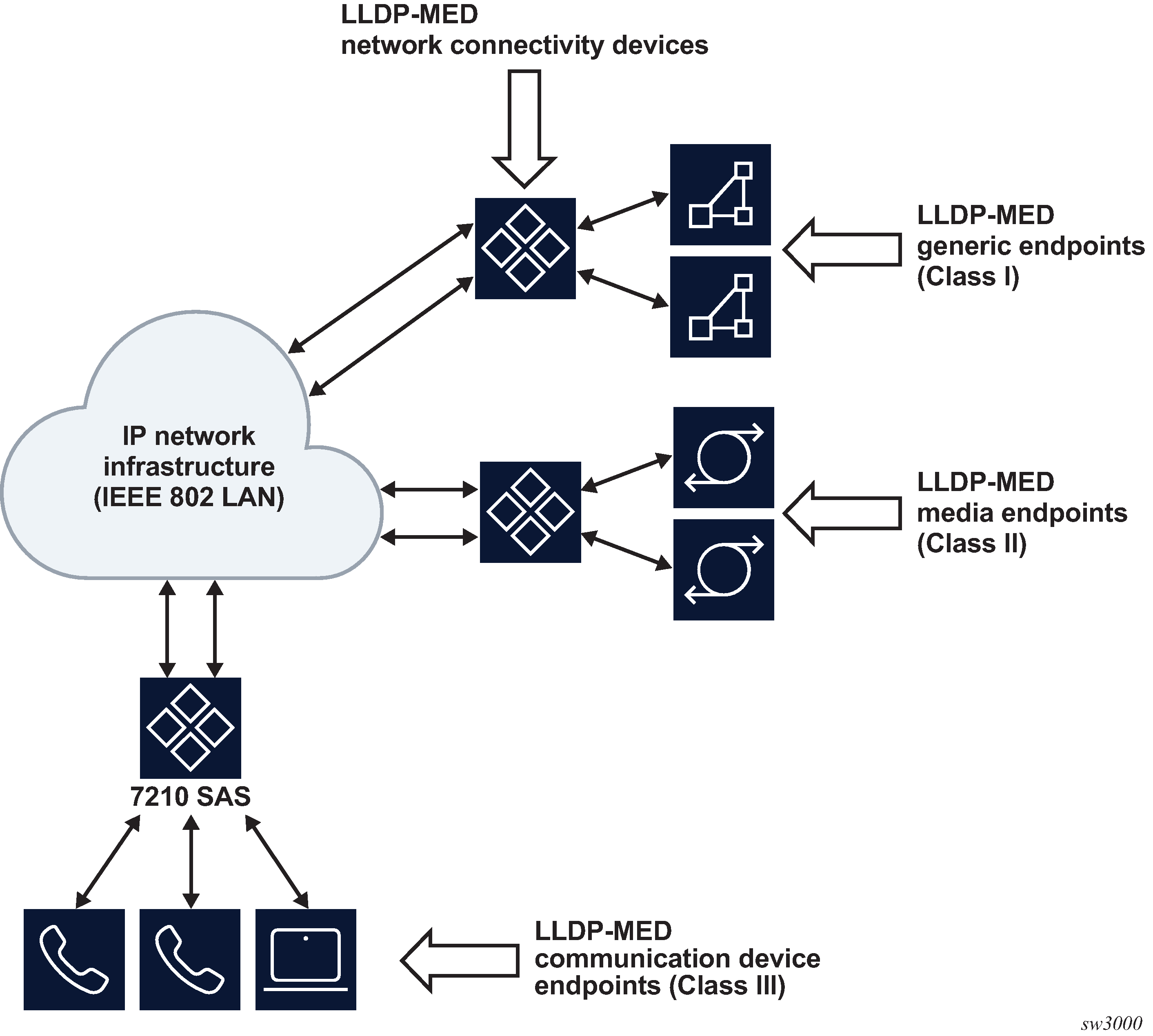LLDP-MED devices are composed of two primary device types: network connectivity devices and endpoint devices.
LLDP-MED network connectivity devices provide access to the IEEE 802 LAN infrastructure for LLDP-MED endpoint devices. An LLDP-MED network connectivity device is a LAN access device based on any of the following technologies:
LAN switch or router
IEEE 802.1 bridge
IEEE 802.3 repeater
IEEE 802.11 wireless access point
any device that supports the IEEE 802.1AB and MED extensions defined by the standard and that can relay IEEE 802 frames using any method
Endpoint devices are composed of three sub-types, as defined in ANSI/TIA-1057:
generic endpoints (Class I)
This endpoint device class is for basic endpoints in LLDP-MED (for example, IP communications controllers).
media endpoints (Class II)
This endpoint device class supports IP media streams (for example, media gateways and conference bridges).
communication device endpoints (Class III)
This endpoint device class support the IP communication system end user (for example, IP telephones and softphones).
The following figure shows the LLDP-MED reference model.
Acting as the network connectivity device, the 7210 SAS only supports the configuration of LLDP-MED communication device endpoints (Class III), such as VoIP phone, using the Network Policy TLV.
